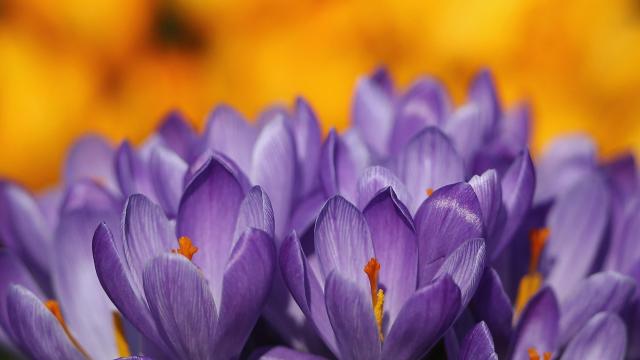Knowing the life cycle of your plants is vital to creating a healthy garden. Some plants grow all year round, like evergreens (hence the name) while others sprout only once a year, like geraniums. It can be hard to keep track of which plants come back every year (perennials) and which live only one cycle (annuals). And then there are biennials, which grow on a whole different timetable. What is the difference between these plant lifecycles, and how can that knowledge help you curate your garden? Here’s how the life cycle of a plant can help you make your planting plans.
Annuals don’t come back every year
Annuals and perennials are commonly confused, due to their similar names. We are used to hearing the word annual being applied to something that happens every year. But in this case, it means these plants only grow once. After an annual plant dies in your garden, it must be replanted again the next year. The home and garden site Garden Design offers the pros and cons of planting annuals. One benefit is their beautiful plumage: Many annuals have brightly coloured flowers, giving your garden a eye-catching aesthetic. Confusingly, some annuals, when planted correctly, can even bloom for a number of seasons — beans, for example, have longer growing seasons, and can grow for up to 95 days.
The downside of a garden loaded with annuals is maintenance: They require a lot of attention in the form of fertilizing, watering, and pruning. To ensure your annuals last as long as possible, plant them far apart, so they will be able to grow to their full size. Garden Design recommends adding a slow-release fertiliser to give the plants a strong foundation and increased longevity. Water plants right away after planting and install mulch to regulate moisture and prevent weeds from growing.
Perennials persist
Unlike annuals that die after the first frost, never to return, perennials will go dormant and sprout again during the next growing season. Perennials include flowers like hostas or daisies and vegetables like asparagus and rhubarb. Investing in perennial plants helps improve the overall health of your garden. Sustainability site Small Footprint Family explains, “[some] perennial veggies provide fertiliser to themselves and their neighbouring plants by fixing nitrogen in the soil.” Planting them could extend the life of the annuals around them.
For perennials to thrive, how must properly prep before planting. This means tilling the soil and adding compost to each planting hole. Planting site Garden Gate suggests planting on a dry, but cloudy day to avoid replanting shock. After the soil is ready, dig a wide and shallow hole to give the plant room to grow. Dig “a wide hole, at least twice as wide as the pot, allows roots to push out into the loosened soil quickly to gather moisture and nutrients,” advises Garden Gate. They recommend using a yardstick to check the planting depth, noting it’s better to “plant the crown a bit too high rather than too deep.” Water around the leaves of the plant right after planting to prevent sinking. Adequately moist soil will hydrate the plant for at least a week. Spreading mulch around your plants will help keep the soil moist and keep out bugs.
Biennials take time and patience
A biennial sounds like a plant that grows twice a year, but actually, it means they take two years to grow after first being planted. The roots are formed during the first year; in the second year, the plant begins to bloom and seed. Biennials can become annuals, depending on your local climate. According to Gardening Know How, locations that are unseasonably cold can “affect whether the plant will be a biennial or an annual.” Or perhaps the plant will bloom flowers one year but not yield edible vegetables or fruits until the next. Biennial plants include beets, carrots, and celery.
Since location does matter, use the USDA hardiness map to decide which plants are most likely to grow in your area. Like annuals, biennials need regular watering and pruning — you are in it for the long haul with these things. Continue to water, feed, and weed your garden as often as possible, and be patient. Community activist and gardener Ron Finley suggests keeping a garden diary so you can, “note when and where you planted your vegetables, whether pests are interfering, and any pertinent details about the development and health of your crops.”

Leave a Reply
You must be logged in to post a comment.